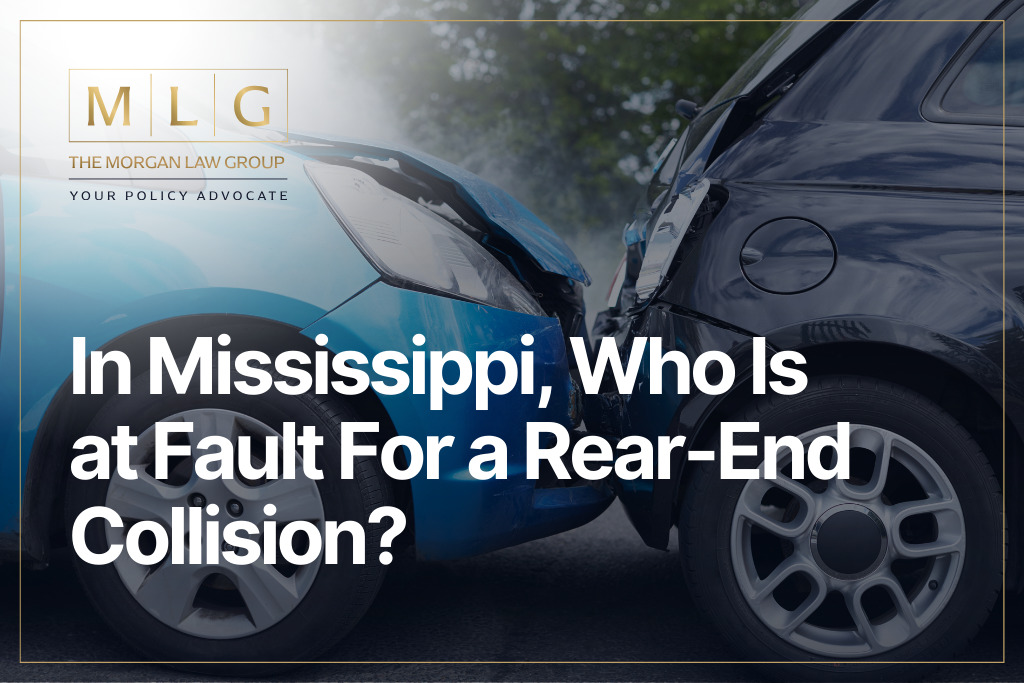Picture yourself embarking on a peaceful afternoon drive. Then, out of nowhere, this harmonious scene is abruptly interrupted. There’s a startlingly loud noise of metal forcefully contacting metal – an eerie symphony of squealing tires and crunching car parts. Within a fraction of a second, you realize that your vehicle has been hit from behind, thrusting you into the chaotic world of rear-end collisions. To navigate the aftermath of such events, it is paramount to grasp two primary concepts including fault and rear-end collision in Mississippi.
The concept of ‘fault’ in legal parlance is the attribution of responsibility or liability for an accident. In simple terms, it is about who caused the accident and hence, who must bear the legal repercussions.
A ‘rear-end collision’ refers to an incident where a vehicle crashes into the one in front of it, typically due to insufficient distance, distracted driving, or abrupt stops. Understanding these definitions sets the stage for unraveling the complexities of who is at fault in a rear-end collision in Mississippi, and the legal pathways victims can follow.
Overview of Mississippi’s Traffic Laws and Rear-End Collisions
Mississippi’s traffic laws uphold that drivers maintain a safe following distance to prevent sudden collisions. When a rear-end collision occurs, there’s a general presumption that the rear driver is at fault. This presumption is based on Mississippi Code § 63-3-313 which emphasizes the need for a vehicle to not follow another more closely than is reasonable.
Determining Fault in a Rear-End Collision in Mississippi
The task of determining fault in a rear-end collision is a nuanced process, requiring a careful examination of a wide array of factors. Insurance companies and courts do not simply lay blame at the foot of the following driver by default. Instead, they undertake a meticulous analysis of the conditions leading up to the incident.
The first factor taken into consideration is the driver’s behavior. This includes whether the driver was distracted at the time of the accident, perhaps using a mobile device, eating, or simply being lost in thought. It also involves investigating any potential influences of drugs or alcohol on the driver’s ability to operate the vehicle safely.
Next, they will assess the speed at which both vehicles were traveling. Was the rear vehicle following too closely given its speed and the traffic conditions? Was the lead vehicle driving unusually slow, creating a road hazard? These questions are fundamental in determining whether either driver was operating their vehicle at a reckless or inappropriate speed.
In addition to the driver’s behavior and speed, the road conditions at the time of the accident are also given due consideration. This can include everything from weather conditions, such as rain, fog, or ice, which can affect visibility and braking distances, to road work or other irregularities on the road surface that may have contributed to the accident.
The principle of negligence is a key cornerstone in the determination of fault. It pertains to a failure to exercise the level of care that a reasonably prudent person would under the same circumstances. A driver who neglects their duty of care on the road, for instance, by tailgating or driving distracted, can be deemed negligent.
However, it’s important to note that there are exceptions to the general rule. Even in rear-end collisions, situations arise where the leading driver shares a portion of the fault. For example, the leading driver may suddenly stop without reason, causing an unavoidable accident. Alternatively, if their vehicle’s brake lights weren’t functioning correctly, the driver behind might not have sufficient warning of an upcoming stop. In other cases, the lead vehicle may reverse suddenly, leading to a collision.
These exceptions are not exhaustive but indicative of the myriad of circumstances that can emerge during a comprehensive investigation of a rear-end collision. Therefore, victims are strongly advised to seek expert legal counsel to ensure a thorough investigation and fair assessment of fault.
Comparative Negligence in aa Rear-End Collision in Mississippi
Mississippi applies the concept of comparative negligence in automobile accident cases. This principle allows the court to allocate fault between the parties involved proportionately. The rear driver’s negligence, in conjunction with other contributing factors like road conditions or the leading driver’s actions, impacts this fault allocation. For instance, a court might find a rear driver 70% at fault for following too closely, but the leading driver 30% at fault for a sudden stop without cause.
Potential Challenges and Legal Representation
Victims often face challenges in proving fault in rear-end collision cases due to complex legal procedures and the need for persuasive evidence. At this juncture, the importance of seeking representation from a personal injury attorney becomes palpable. The Morgan Law Group, a leading personal injury law firm in Mississippi, brings a wealth of expertise to such cases. An experienced personal injury lawyer not only navigates the legal labyrinth but also vehemently advocates for the victim’s rights.
If you find yourself in the aftermath of a rear-end collision, remember: you don’t have to face it alone. Our team is ready to assist you every step of the way, ensuring you have the most robust representation possible. Don’t hesitate, reach out to The Morgan Law Group today to defend your rights and secure your future.

